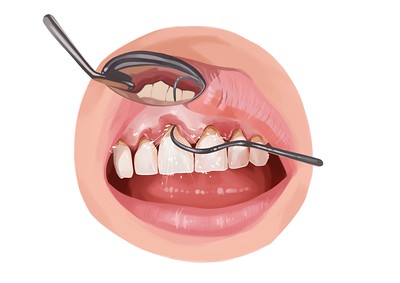Having gum disease is a common problem among people today. While it may seem like a minor issue, the truth is gum disease can lead to serious oral health complications if left untreated. The good news is that there are many effective gum disease treatments available to help manage and treat gum disease. In this blog, we’ll be discussing the various gum disease treatment options available to help you make an informed decision about your oral health.
Non-Surgical Gum Disease Treatments
Non-surgical gum disease treatments are the first line of defense against this oral problem. These treatments aim to remove bacteria and plaque buildup that contribute to gum disease. The most common non-surgical treatments include scaling and root planning. Scaling involves removing plaque and tartar buildup from the tooth surface and root planing is the process of smoothing out the roots of your teeth to prevent bacterial colonization.
Antibiotics
Antibiotics are often used in combination with non-surgical methods to treat gum disease. These medications help fight infections and reduce inflammation in the gum tissues. Antibiotics are available in different forms including mouthwashes, gels, or capsules. Your dentist may recommend antibiotics after examining your dental condition.
Laser Therapy
Laser therapy is a relatively new strategy used to treat gum disease. The laser used in this therapy kills the bacteria that cause gum disease and reduces inflammation in the gums. Laser therapy is less invasive than traditional methods and is known to be less painful. In addition, it often results in a quicker recovery time.
Surgical Treatments
In some cases, surgical treatment is necessary to tackle advanced cases of gum disease. One of the commonly performed surgeries is flap surgery. This involves lifting the gums away from the teeth to remove tartar and plaque buildup. After the procedure, the gums are repositioned securely around the teeth. Another procedure is bone grafting which aims at restoring the damaged or lost bone tissue that supports the teeth.
Maintenance Therapy
The goal of gum disease treatment doesn’t stop after the procedure. Maintenance therapy ensures that you maintain good oral health habits that prevent gum disease from reoccurring. Maintenance therapy may include frequent professional cleanings, regular dental examinations, and good oral hygiene habits at home.
Conclusion
Gum disease can result in serious oral health complications. That’s why it is important to identify it early and treat it promptly. The treatment options available for gum disease range from non-surgical treatments to surgical treatments, and maintenance therapy to prevent the condition from resurfacing. If you have any symptoms of gum disease, you should schedule an appointment with your dentist as soon as possible to receive prompt medical attention. Remember, prevention is better than cure, so make sure to practice good oral hygiene habits to keep gum disease at bay.



